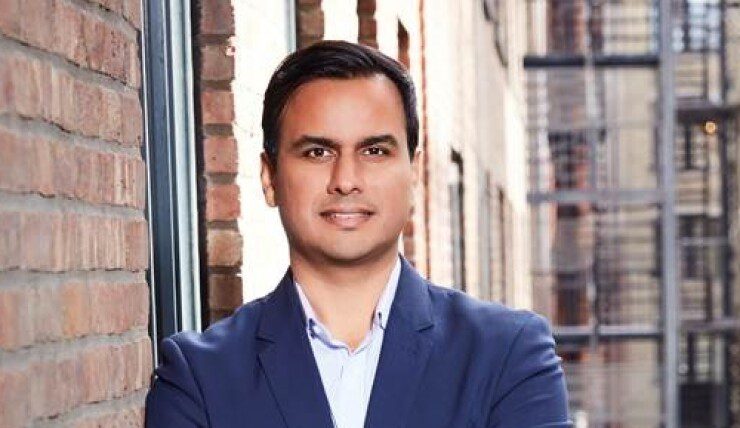A record-setting fourth quarter and full year have MoneyLion co-founder, and CEO Dee Choubey excited about what comes next. The company recently released its financial results for Q4 and 2022’s year-end.
The numbers
Customer acquisition was strong, with 1.1 million added in the fourth quarter. For the full year, customer totals nearly doubled, reaching 97% to 6.5 million. Total products rose 60% to reach 12.9 million. Total Q4 originations were up 28% YOY to $496 million. Total originations increased 65% YOY to $1.8 billion for the year.
Annual adjusted revenue surged 99% to $328 million, with $92 million coming in Q4. Total revenue net increased 71% to $94.9 million in Q4 compared to 4Q21. Gross profit increased 61% for the fourth quarter compared to the same period in 2021. Gross profits rose 87% for the entire year to $195.1 million.
MoneyLion recorded a net loss of $136.2 million in the fourth quarter, up from $32.2 million in the fourth quarter of 2021. For 2022, the net loss was $190.3 million, up from $169.5 million in 2021. The gain was driven mainly by a one-time, non-cash goodwill impairment loss of $136.8 million in Q4.
In the first quarter, MoneyLion expects adjusted revenue between $85-$88 million, an adjusted gross profit margin of 58%-62%, and an adjusted EBITDA of roughly ($4) to $0 million.
“It’s going to take some time to come into the stock price, but we’re excited,” Choubey began. “We’re ahead of schedule on EBITDA, so the team did a great job.”
How MoneyLion’s acquisitions attracted new customers and re-engaged existing ones.
Strong customer acquisition rates were driven by reminding existing users of the services MoneyLion brings, Choubey said. The acquisitions of Even Financial and MALKA Media Group helped that. Those additions brought synergies as they were integrated into the MoneyLion system.
“We were able to use that as a catalyst to go back to our large existing user base, people that may have forgotten us and said ‘MoneyLion’s never been better, come back for integrated banking, investing round-ups, and importantly, money content,'” Choubey said.

MoneyLion’s media content is presented in the same fashion that the customer base consumes news and entertainment. There are playlists, personalized content, and peer-produced selections. You see more of what you tell them you’re interested in.
Owning the culture of money in the USA
The impetus for buying the media company was to further the goal of owning the culture of money in the United States. He sees MoneyLion as a community where a creator network who’ve established themselves on TikTok, Instagram, and Facebook also produces content for MoneyLion. The content tags can be matched with the content customers seek.
The more personalized the content becomes, the better, Choubey reasons. And that content inspires the user to continue on their financial journey.
“You want to learn from inspirational people,” Choubey said. “You want to learn from folks that you follow as athletes or influencers or creatives or musicians or celebrities. And that mission is 90% there.
“We have an industry-leading time spent on the app, which we’re excited about. And it shows that our customers return multiple times daily to consume that content. And they’re doing that for longer throughout their relationship with us.”
A key component of customer acquisition and content delivery is a unique ability to connect with cultural forces people gravitate toward, Choubey said. That includes NASCAR’s Team Jordan, which has the strong personalities of Bubba Wallace and Tyler Reddick on the team. Partnerships have also been struck with NFL player and influencer Brandon Copeland, gymnast Olivia Dunne, and Sistia, Sophia, and Scarlet Stallone.
Attracting people is one thing, but keeping them is another. Choubey isn’t worried because MoneyLion combines personalized content and value. They can quickly tell a gig worker what their combined 1099 income is. Good luck getting your century-plus-old bank to do that, Choubey added.
Additional growth through enterprise strategies
A less-discussed but successful aspect of MoneyLion’s strategy is the ability to help other news sites monetize their impressions through financial product matching, Choubey said.
It serves the entire middle class (at least), with most likely to be in the market for several financial products. Customers are directed to the consumer side if there is no immediate product match. They engage with the content, with Choubey confident there will eventually be a product match.
“This is what drives that customer number to go up and our customer acquisition costs to come down because we’re sitting right alongside that network,” he said. “Then we don’t have to necessarily put our names on stadiums as much as some of our peers do because we’re already seeing those consumers through the network and the exchange.”
Tie it together, and MoneyLion is positioned to grow with the user as they progress through their financial life, Choubey said. Anytime an American consumer considers a financial product Choubey wants them to get it through MoneyLion.
If being America’s first stop in the culture of money isn’t a lofty enough goal, Choubey also wants to be top-of-mind for the enterprise.
“Sometimes it’s worth sending something through RTP, sometimes for ACH, sometimes through Visa, MasterCard, sometimes through some other capabilities,” Choubey said. “We have all that built for our consumer business, but the technology we want to be known for is our enterprise web services. So the same technologies that we use in-house wish to make available to all of our 400-plus demand partners.
“That’s payments as a service, that’s a fraud as a service, business intelligence, and analytics. How can we help CMO pay less for the incremental lead, and how can we help them retarget because we see their consumers return for other financial products? How can we work with them to extend lifetime value, just like we do for MoneyLion?”


